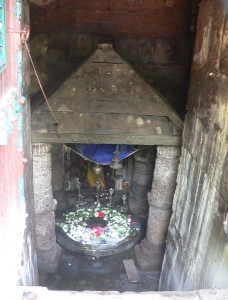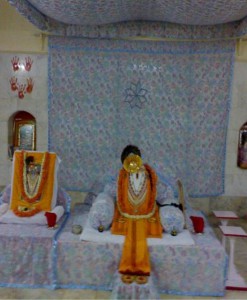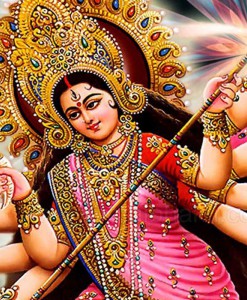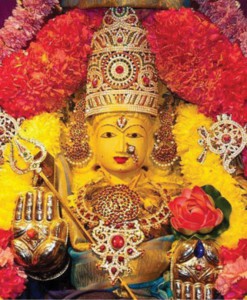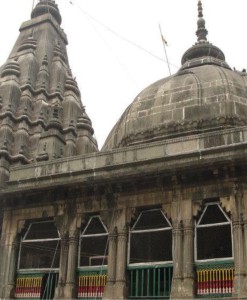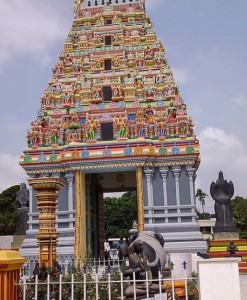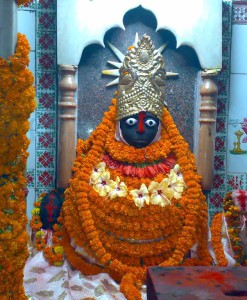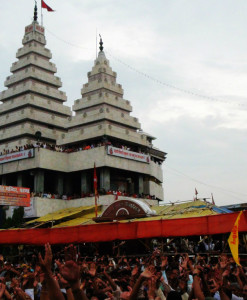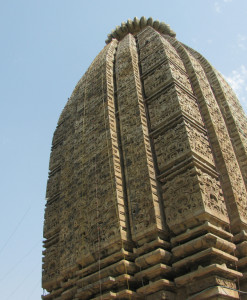No products in the cart.
The Bhringesvara Shiva temple is situated on the foothills of Dhauli and the left bank of the river Daya, in the southeastern outskirts of Bhubaneswar in the village Khatuapada. The temple is facing towards west and the presiding deity is a circular yoni pitha with a hole at the center. The temple is made of light grey sand stone. The temple is renovated one from bottom to the top by employing the earlier materials. This temple is now under the protection of Orissa State Archaeology.
Bhringesvara Shiva Temple, Orissa
The main temple is of late Kalingan style dating back to 15th century. The present temple was built during the Gajapati Rulers.
A four-handed black chlorite image of Brahma holding Veda and water vessel in upper two hands and rosary, abhaya mudra in lower two hand. The temple is situated on the foothills of Dhauli and the left bank of the river Daya, in the southeastern outskirts of Bhubaneswar in the village Khatuapada.

The temple is facing towards west and the presiding deity is a circular yoni pitha with a hole at the centre.
The special features of the idol is the four-handed black chlorite image of Brahma holding Veda and water vessel in upper two hands and rosary and Abhaya Mudra (represents protection, peace, benevolence, and dispelling of fear) in his lower two hands.
The parsvadevata niches are located on the Raha Paga of the Tala Jangha on the three sides of north, west and south, each measuring 1.06 meters in height, 0. 57 meters in breadth and 0.39 meters in depth houses the images of Ganesa in the south and the image of Mahisasuramardini in the north.
The niche in the south is empty. Ganesa stands in Tribhanga pose over a lotus pedestal and holds rosary in his lower right hand and a mace in his lower left hand. The upper two hands are broken. The image is also crowned by jatamukuta and wearing a sacred snake thread.Behind the head, is a trefoil chaitya motif with two attendants offering jackfruits and flying vidyadharas holding garlands in their both hands.
Mahisasuramardini in the northern niche is unusual. It has taken the place of Parvati. Hence, this may be a later installation inside the niche. The demon has a buffalo head and a human body. The deity who has four arms presses the head of the demon in her main left hand and tramples the demon with her right leg. The image has all archaic features of an early phase, which may be assigned to the 8th century AD.
The temple stands on a high platform measuring 26.50 m in length, 22.10 m in width and 2 m in height. On plan, the temple has a square vimana and a frontal porch measuring 08.35 m in length (vimana measures 7.10 m and frontal porch is 1.25 m). The vimana has a square sanctum measuring 2 m2inside the cella. The vimana is pancharatha as distinguished by a central raha and a pair of anuratha pagas and kanika paga on either side of the raha. On elevation, the vimana is of rekha order that measures 11.14 m in height. The bada of the temple measuring 4.14 m has five mouldings without any sculptural embellishment. The pabhaga measures 1.08 m, tala jangha – 0.95 m, bandhana – 0.31 m, upara jangha – 0.90 m, and baranda – 0.95 m. The pabhaga has four base moldings of khura, kumbha, pata and basanta. The gandi measuring 4.50 m is devoid of any decoration except the Udyota simha in the raha pagas on three sides and gajakranta in the western wall. The mastaka bears beki, amlaka, khapuri, kalasa, ayudha measuring 2.50 m. in height.

The doorjambs are partly renovated. It measures 2.38 m in height and 1.10 m in width. It has three vertical bands with sakhas like puspa, nara, lata from exterior to interior, each sakha measuring 0.14 m. There is a chandrasila between the doorjamb on the floor, which is decorated with beautiful conches on both the sides. At the base of the doorjamb, there are two dvarapala niches on either side measuring 0.55 m in height, 0.36 m in width and 0.10 m in depth. The niches are occupied by Saivite dvarapalas holding tridents and river goddesses – Ganga is standing in tribhangi pose on her makara mount under a parasol held by a diminutive female figure in the right niche and Yamuna in the similar fashion standing on her tortoise mount in the left niche. Lintel: The architrave above the doorjamb measuring 1.50 m is carved with the Navagrahas seated in Padmasana within a niche. Ravi is holding lotus in his both hands, Rahu has a big head crowned by a jatamukuta, holding half-moon and Ketu with a serpent tail has uplifted hands and three-headed serpent canopy over the head.
By Road: The temple of Bhringesvara Shiva Temple is situated at Bhubaneswar in Orissa state of India. Bhubaneshwar is well connected to other major cities of the country via regular buses.
By Rail: It is well connected through nearest Bhubaneshwar railway station
to major cities railway stations like Delhi, Agra, Mumbai, Chennai, Ajmer, Pali, Jaipur, Ahmedabad.
By Air: The nearest Airport is Bhubaneswar Airport which is well connected with regular domestic flights to Delhi, Mumbai.
Temple remains open from 6am to 9pm. In this temple major rituals of Lord Shiva are performed. Mahashiva Ratri is celebrated at a grand scale in this temple. Kartika-purnima, Raja Sankranti, and Jalasaya ceremony are also celebrated on a grand scale. Thread ceremony, mundana, marriage ceremony are performed. Village public meetings are also held in the premises.

